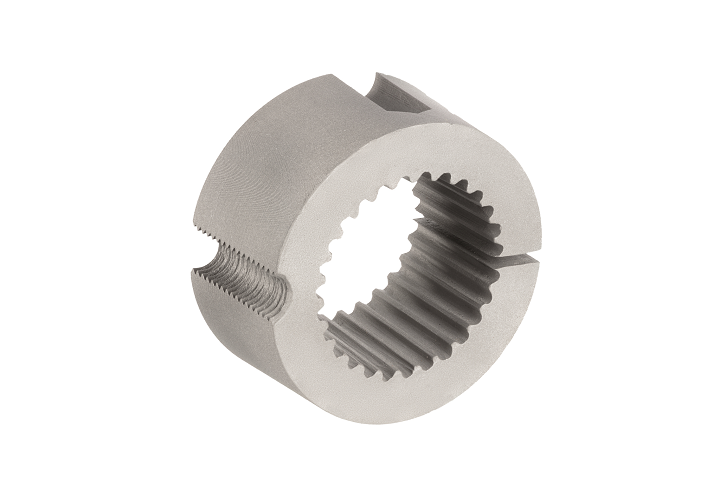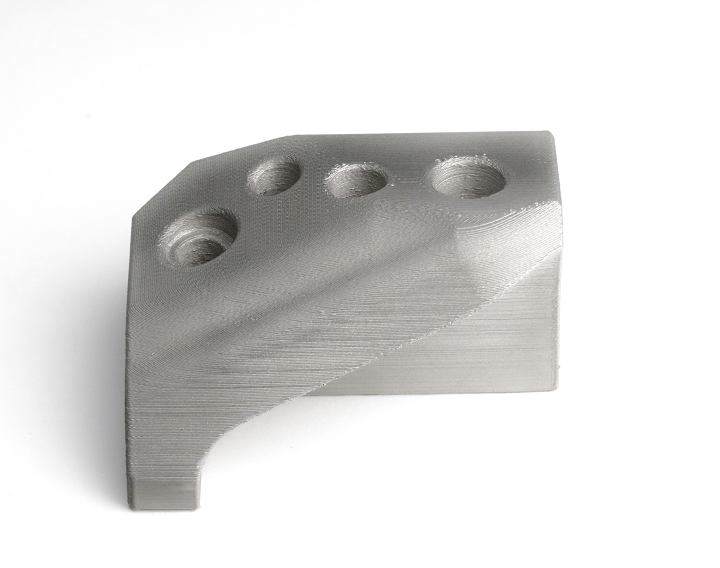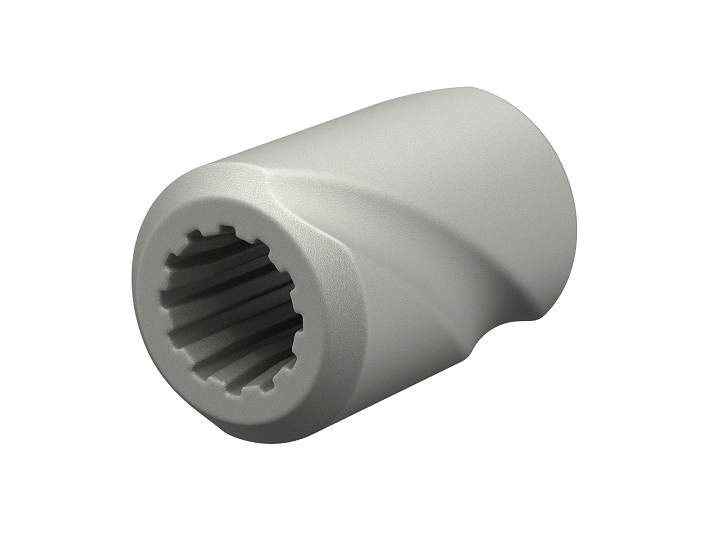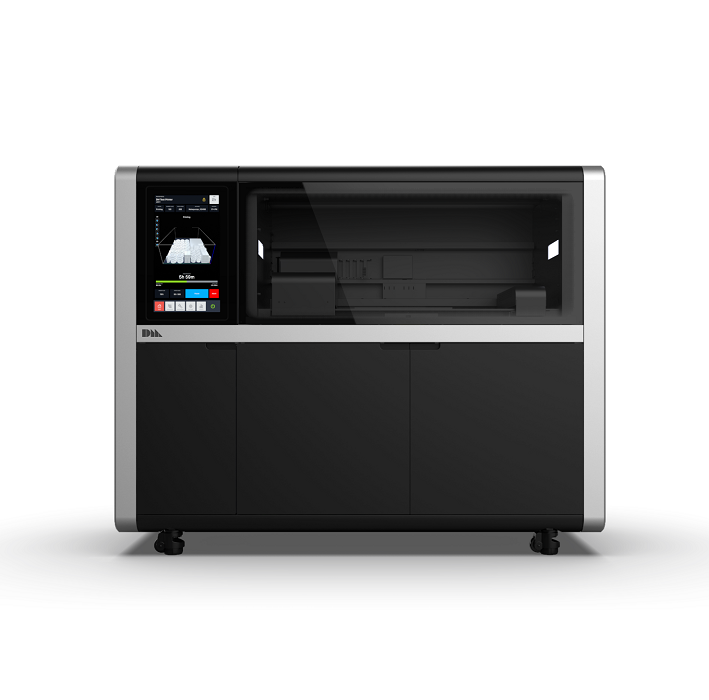Desktop Metal (NYSE: DM), which revealed a 907% revenue growth year-on-year but a net loss of $67 million for Q3 2021, has been collaborating with industrial 3D printing company Uniformity Labs for several years to develop an aluminum 6061 powder for binder jetting. The two AM companies recently announced the continuation of their partnership to qualify and offer binder jet powders with super-low porosity and excellent mechanical properties and sintered part density when printed with Desktop Metal’s binder jetting systems.
The two plan to leverage Uniformity Labs’ metal powder processing capabilities and Desktop Metal’s binder jet printers to develop integrated solutions for businesses looking to more easily adopt binder jetting for end-use metal parts production at scale.

This strategic partnership leverages Desktop Metal’s high-speed binder jetting systems with Uniformity Labs’ innovative capabilities in metal powder processing to create industry-leading solutions. The result is extraordinarily high precision parts exhibiting excellent material properties and surface finish, like this spline taper lock printed on the Shop System.
“We are excited to unveil this strategic partnership with Uniformity Labs, which is pioneering materials solutions that will advance the AM industry. Binder jetting powders processed with Uniformity Labs technology enable unmatched mechanical properties and can further improve the economics of printing,” stated Desktop Metal’s Founder and CEO Ric Fulop. “We look forward to collaborating with the Uniformity Labs team to optimize binder jetting powders exclusively for Desktop Metal’s AM 2.0 solutions and provide our customers with integrated offerings including hardware, software, and materials that enable robust adoption of AM for mass production.”
Last year, Uniformity Labs raised $38.35 million in Series B funding to expand and improve its metal powder portfolio. The startup’s patented materials technology makes it possible to create powders with tap densities up to 85% that are more flowable than other similarly sized powders and can sinter to full density. Uniformity Labs says its powders can reliably spread across the print bed uniformly and at the highest relative density, which can lead to extremely high-precision parts with great surface finish and material properties. The startup has installed several of Desktop Metal’s printers at its Fremont, California facilities, including a Shop System and Production System P-1, to improve the collaboration and speed up materials qualification.
“This partnership strengthens our ongoing collaboration with Desktop Metal to provide incredible value for its customers looking to adopt next-generation AM solutions. We are thrilled to continue our work with Desktop Metal to qualify our high-performance, engineered powders that deliver superior mechanical properties, surface finish, and part reliability,” said Adam Hopkins, Founder, and CEO of Uniformity Labs.
The companies will focus on qualifying optimized binder jet powders exclusively for Desktop Metal printers, including those from ExOne, and plan to release print profiles with characterized mechanical properties for multiple materials, such as stainless steels and aluminum. Several high-performance powders have already been qualified for the Shop System, and topologically engineered powders for the Production System and ExOne printers are available from Uniformity Labs.
Speaking of materials, Desktop Metal has qualified D2 tool steel for 3D printing on the Studio System 2, which reportedly makes it the first company to offer the material in a two-step bound metal AM process. This means customers can use an almost hands-free process to print parts in low volumes for high-strength D2 applications, like injection molds with conformal cooling channels and cold work metal forming tools, on the office-friendly Studio System 2 platform, which uses the company’s proprietary Bound Metal Deposition (BMD) technology.
“D2 tool steel has traditionally been a challenging and expensive material to work with. With this material now available on the Studio System 2, we’ve streamlined production of D2 parts to just two simple steps for improved affordability and accessibility,” said Jonah Myerberg, Desktop Metal’s Co-Founder and CTO. “We are excited to be able to offer our customers this new material with higher hardness after heat treatment than all of the other Studio System materials qualified to-date, unlocking new applications that require tooling material grade strength.”

Aerial cam cutting section tools are a component of stamping dies that make frame components on high-volume vehicle manufacturing lines. D2 tool steel is a key material for this because of its high hardness and excellent wear resistance, properties critical for stamping applications where the tool is subjected to repeated impact while forming.
D2 is a versatile material, with high hardness and compressive strength post-heat treatment. The high-carbon, high-chromium air-hardening tool steel is great for conformal cooling applications, as it features dimensional stability, high wear resistance properties, and corrosion resistance in its hardened condition. The material’s wear resistance and moderate toughness also make it a good choice for cold work tools, like blanking and forming dies, gauges, and burnishing tools. The great mechanical properties of D2 tool steel were also put to the test in an aerial cam cutting section tool, which is a part of stamping dies used to make frame components on high-volume automobile manufacturing lines. This kind of tool can now be 3D printed at low volumes on the Studio System 2.
“Egar Tool and Die is a rapidly growing manufacturing company for automotive stamping dies, production stampings and welded assemblies and we have been eagerly awaiting the launch of D2 for our two Studio Systems. The release of this material will serve to push our tooling design to new heights and will give us the critical material properties and hardness needed for our die components,” said Colin Kools, Director of Additive Manufacturing at Egar Tool and Die.
Desktop Metal has also qualified D2 tool steel for its industrial Production System, which uses super-fast patent-pending Single Pass Jetting (SPJ) technology to print metal parts at scale for high-temperature, high-strength applications. The material’s high compressive strength, hardness, and wear resistance are useful for printing a rotating cam, used in chemical or oil and gas processing applications to convert rotary motion into reciprocating linear motion in a machine.

D2 tool steel is critical for rotating cams because of its hardness and corrosion resistance, which ensures a longer lifetime as the cam mechanically interacts with a sliding pin. In addition, because these components are often integrated into machines operating in harsh environments, the corrosion resistance provided by D2 ensures that the parts will perform as intended and not deteriorate.
Binder jet 3D printing makes it possible to produce these cams in one step, rather than having to use multiple traditional manufacturing steps. This decreases the part’s cost and lead time and makes it possible to fabricate cams of multiple sizes in a single build—no tooling or fixturing required. Printing the rotating cams out of D2 tool steel helps give the part a longer lifetime, and the corrosion resistance helps it perform well and not deteriorate in a harsh environment.
(Images: Desktop Metal)
Subscribe to Our Email Newsletter
Stay up-to-date on all the latest news from the 3D printing industry and receive information and offers from third party vendors.
You May Also Like
Gorilla Sports GE’s First 3D Printed Titanium Cast
How do you help a gorilla with a broken arm? Sounds like the start of a bad joke a zookeeper might tell, but it’s an actual dilemma recently faced by...
Nylon 3D Printed Parts Made More Functional with Coatings & Colors
Parts 3D printed from polyamide (PA, Nylon) 12 using powder bed fusion (PBF) are a mainstay in the additive manufacturing (AM) industry. While post-finishing processes have improved the porosity of...
$25M to Back Sintavia’s Largest Expansion of Metal 3D Printing Capacity Since 2019
Sintavia, the digital manufacturing company specializing in mission-critical parts for strategic sectors, announced a $25 million investment to increase its production capacity, the largest expansion to its operations since 2019....
Velo3D Initiates Public Offering in a Bid to Strengthen Financial Foundations and Drive Future Growth
Velo3D (NYSE: VLD) has been among a number of publicly traded 3D printing firms that have attempted to weather the current macroeconomic climate. After posting a challenging financial report for 2023,...
































